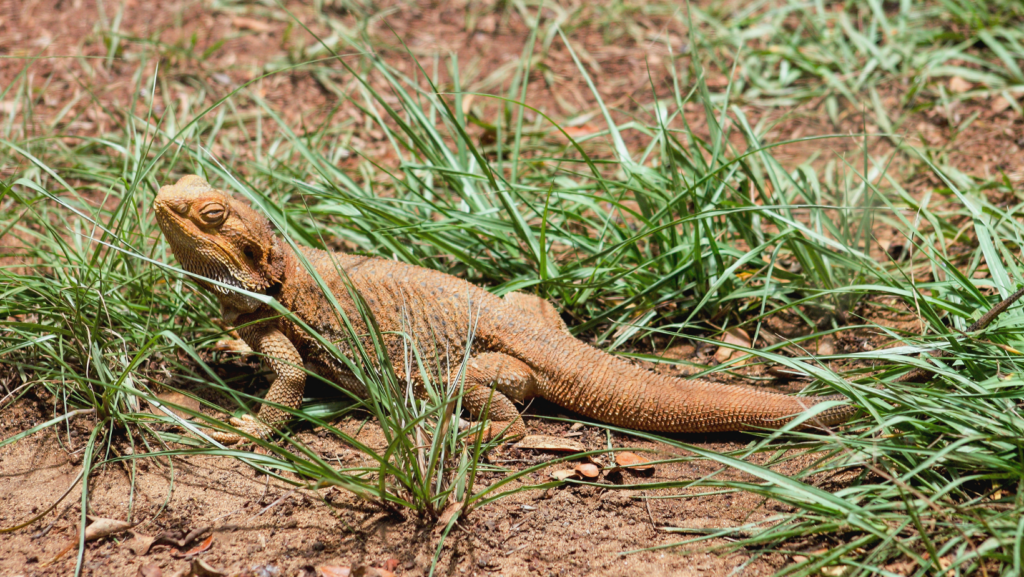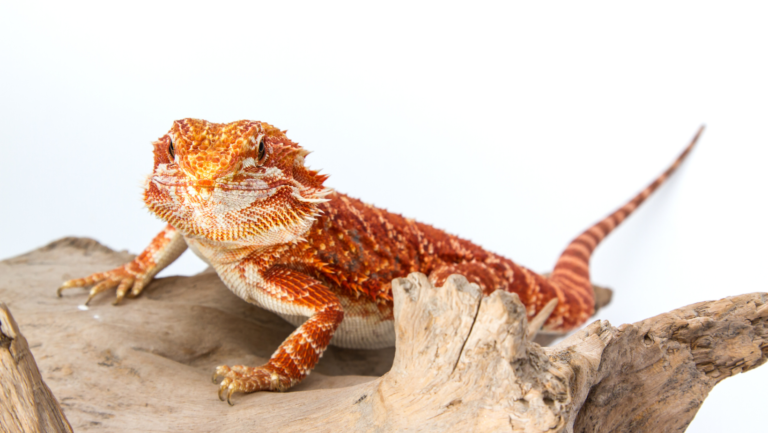
How big does a bearded dragon get when fully grown? Bearded dragons are a species of lizard that can grow to be quite large. They are native to Australia but have been bred in captivity all over the world.
Bearded dragons can reach a length of 24 inches and a weight of around two pounds. They are popular pets due to their gentle nature and impressive size. While bearded dragons do not reach the size of some other lizard species, they are still sizeable pet that requires a fair amount of care.
Facts about bearded dragons
- Bearded dragons are a species of lizard that can grow to be quite large.
- They are native to Australia but have been bred in captivity all over the world.
- Bearded dragons can reach a length of 24 inches and a weight of around two pounds.
- They are popular pets due to their gentle nature and impressive size.
- While bearded dragons do not reach the size of some other lizard species, they are still sizeable pet that requires a fair amount of care.
When Do Bearded Dragons Reach Full Size?
Bearded dragons reach full size in 10 – 12 years. A fully grown bearded dragon can range in size from 24 inches to 36 inches in length and up to two pounds in weight. Male Bearded Dragons may have larger head widths which make them seem more threatening than their female counterparts who generally grow more slender and lighter.
Male bearded dragons also tend to be more aggressive than females and may spar with one another for dominance. This behavior is not usually seen in captive bearded dragons, but it can happen if two males are housed together.
What Factors Affect How Big A Bearded Dragon Gets?
Several factors can affect how big a bearded dragon gets when fully grown. These include:
Diet
A well-balanced diet is important for preventing health problems and helping your bearded dragon reach its full-size potential. Bearded dragons should have a diet that includes both live food and vegetables.
Environment
A clean and spacious enclosure will give your bearded dragon room to grow. Bearded dragons need plenty of space to move around and run.
Health
Bearded dragons who are healthy and have no health problems tend to grow larger than those that do not.
How Big Does A Bearded Dragon Get In The Wild?

In the wild, bearded dragons can reach a length of 36 inches and weigh up to three pounds. However, the average wild bearded dragon is usually around 24 inches in length and two pounds in weight.
Bearded dragons in captivity generally do not reach the same size as those in the wild due to the different conditions they are kept in.
Ideal Diet for Optimal Growth
A well-balanced diet is important for preventing health problems and helping your bearded dragon reach its full-size potential. Bearded dragons should have a diet that includes both live food and vegetables.
Live food items such as crickets, mealworms, and waxworms should make up the majority of your bearded dragon’s diet. These foods should be dusted with calcium powder to provide your bearded dragon with the nutrients it needs to grow.
Vegetables such as collard greens, mustard greens, and turnip greens should also be offered to your bearded dragon. These vegetables should be chopped into small pieces so that your bearded dragon can easily eat them.
Fruits and sweets should be given to your bearded dragon sparingly as they are not a necessary part of their diet.
What Other Factors Affect Bearded Dragon Growth?
Other factors that can affect how big a bearded dragon gets when fully grown include:
- Age: Bearded dragons do not reach full size until they are 10 to 12 years old.
- Sex: Male bearded dragons may grow larger than female bearded dragons.
- Genetics: Some bearded dragons may reach a larger size due to their genetics. If one of your bearded dragon’s parents is a large individual, likely, the offspring will also be large.
- Type of Bearded Dragon: There can be some variation in size among different types of bearded dragons. For example, Australian bearded dragons may grow larger than Spanish bearded dragons.
Reasons Why my Bearded dragon is Not Growing?
You may have to feed your bearded dragon too much fruit or sweets. Bearded dragons need less than 10% of their diet coming from things such as fruits and sweets because they are not a necessary part of their diet.
Bearded dragons in captivity generally do not reach the same size as those in the wild due to the different conditions that they’re kept in. In the wild, bearded dragons can reach a length of 36 inches and weigh up to three pounds. However, the average bearded dragon in captivity only grows to be about 24 inches long and two pounds in weight.
Some common health problems that could stunt your bearded dragon’s growth include:
- Metabolic Bone Disease: This is a common health problem in bearded dragons that are caused by a lack of calcium in their diet. Metabolic bone disease can cause your bearded dragon’s bones to become weak and break easily.
- Impaction: Impaction is a condition that occurs when your bearded dragon ingests something that it cannot digest properly. This can happen if your bearded dragon eats too much sand or dirt. Impaction can cause your bearded dragon’s digestive system to shut down and may even be fatal.
- Parasites: Parasites can live inside your bearded dragon and steal nutrients from their food, which can stunt their growth. Some common parasites that affect bearded dragons include worms, mites, and lice.
- Infections: Infections can occur when your bearded dragon is injured or if they come into contact with a harmful bacteria or virus. Infections can cause your bearded dragon’s body to swell and may make it difficult for them to eat or breathe.
Conclusion
Bearded dragons are popular pets for families with children. They’re easy to care for and don’t require as much space or attention as other pets like cats, dogs, and birds do. However, how big does a bearded dragon get? There’s no one answer because it depends on multiple factors such as the age of your pet, their diet, and how healthy they are.
In general, bearded dragons reach their full size at around 10 to 12 years of age. Male bearded dragons may grow larger than female bearded dragons, and some bearded dragons may be larger than others due to their genetics. If your beard dragon isn’t growing as quickly as you’d like, it’s important to consult with a veterinarian to rule out any health problems. With proper care, your bearded dragon can live a long and healthy life.

